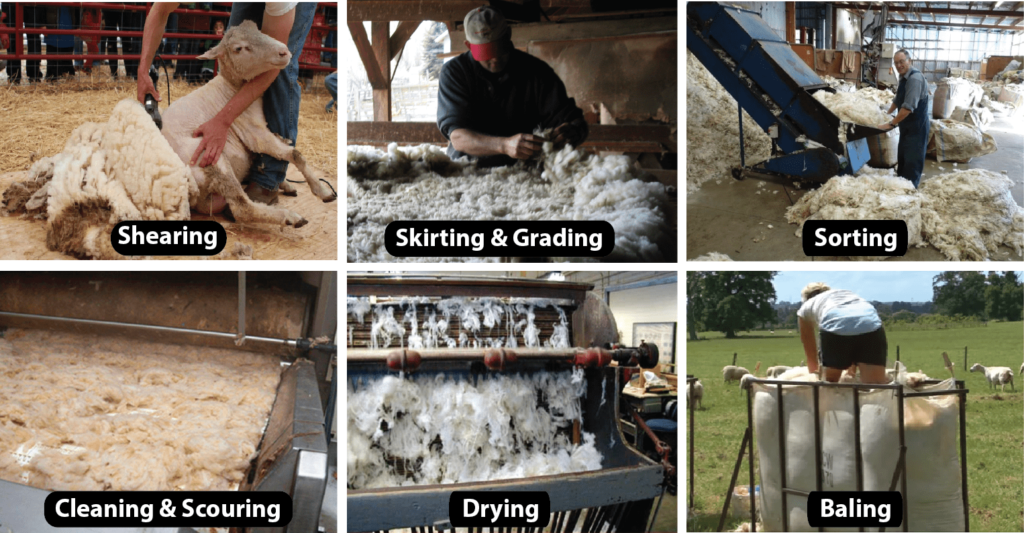Wool🦙
Key Notes :
Definition of Wool:

- Wool is a natural fiber obtained from the fleece (hair) of sheep and other animals like goats (cashmere and mohair), alpacas, and rabbits (angora).
Source of Wool:

- The primary source of wool is the sheep. Wool is sheared from the sheep once a year, during a process called “shearing.”
Characteristics of Wool:

- Soft and Elastic: Wool fibers are soft to the touch and have natural elasticity, which helps garments keep their shape.
- Warmth: Wool is an excellent insulator, trapping air between the fibers to retain body heat. This makes it ideal for colder climates.
- Absorbent: Wool fibers can absorb moisture without feeling wet, which helps in keeping the body warm even in wet conditions.
- Breathable: Wool can allow moisture and heat to escape, making it breathable and comfortable to wear.
Uses of Wool:

- Wool is commonly used to make sweaters, scarves, blankets, coats, and other warm clothing.
- It is also used in making carpets, upholstery, and insulation materials due to its durability and natural properties.
Processing Wool:

- Shearing: The wool is harvested from sheep once a year.
- Washing: After shearing, the wool is washed to remove dirt, grease (lanolin), and other impurities.
- Carding: The wool is then combed to align the fibers.
- Spinning: After carding, the wool is spun into yarn.
- Weaving or Knitting: The yarn is used to create fabrics or knitted materials for clothing and other products.
Types of Wool:

- Merino Wool: Known for being fine and soft, this wool comes from Merino sheep and is highly valued for high-quality clothing.
- Cashmere: A soft wool obtained from the Cashmere goat, known for its luxurious texture and warmth.
- Mohair: Wool from the Angora goat, prized for its sheen and softness.
- Alpaca Wool: Derived from alpacas, this wool is softer and warmer than sheep wool.
Wool’s Environmental Impact:
- Wool is a renewable resource, as sheep produce new wool each year.
- It is biodegradable, which makes it an environmentally friendly alternative to synthetic fibers.
Care and Maintenance of Wool:
- Wool items should be washed with care, preferably by hand or on a gentle cycle, as it can shrink or lose its shape if not properly maintained.
- Wool products often require special detergents designed to preserve the fiber’s quality.
Let’s Practice!

